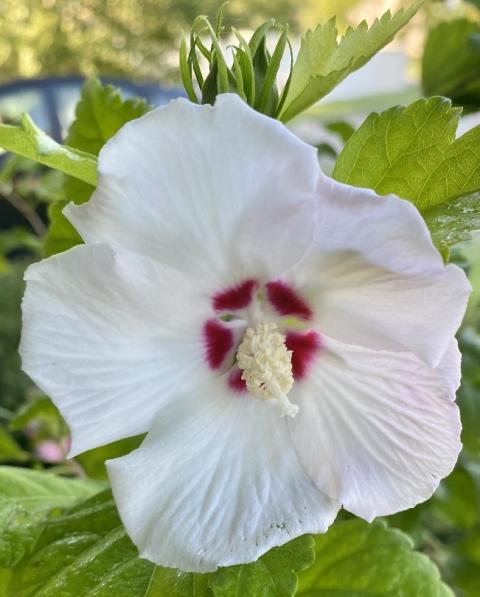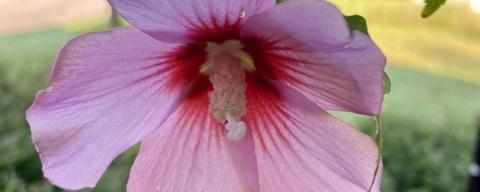Why Does My Rose of Sharon Suddenly Have a White Flower When the Rest Have Been Pink?
Rose of Sharon (Hibiscus syriacus) is known for its prolific summer flowers, ranging in color from pink to blue and occasionally white. Blooming from mid-summer to early fall, individual flowers are short-lived, lasting only a day or so. Remarkably, these shrubs along with other hibiscus species can change floral color, variably amongst individual flowers, and time of day! How does this happen? The answer lies in genetics, but more so by its influences on floral pigments.
These pigments, classified into carotenoids and two types of flavonoids (anthocyanins and flavonols), give flowers their color. Carotenoids create yellow, orange and red colors and are the most stable pigments. Influenced by heat and sunlight, the intensity of these two factors increases the vibrancy of those colors. Anthocyanins, however, are unstable pigments that are most responsible for color change. These pigments produce blue, purple, pink, red and black colors, and are influenced by temperature, pH and plant nutrition.

This white flower comes from the same plant at the same bloom time as the pink flower at the top of the post.
Colder temperatures cause anthocyanins to become redder (e.g., fall leaf color,) while hotter temperatures and bright sunlight degrade some of these pigments, leading to fading floral color. When anthocyanin production is inhibited within the flower, the color appears as white. Additionally, anthocyanins react to changing pH within the flower and can cause color change even within distinct parts of the same flower!
This is like how hydrangea flowers change color in response to changing soil pH, however the pH within hibiscus plants is solely determined through genetics. Flavonols have all the same characteristics as anthocyanins, except that they represent pale yellow to white colors.
Floral pigments in other hibiscus species can also shift in response to maturity. This is most recognized in Confederate rose (Hibiscus mutabilis) as the flowers gradually change from white to dark pink.
Although the genetics and variety of your hibiscus will largely define the range of colors and type of flowers it has, floral color change is more common than you may think, depending on the state of their pigments!
Cultivation Specs:
Rose of Sharon (Hibiscus syriacus) prefers moist but well-draining soil and is adaptable to variable soil pH and fertility. It grows best in full sun to partial shade and blooms during hot weather. Spring pruning will encourage new growth and larger flowers. Attractive to butterflies, hummingbirds and specialized bees.
Do you love learning about stuff like this?
SUBSCRIBE TO Granite State Gardening newsletter
Got questions? The UNH Extension Yard and Garden Infoline offers practical help finding answers for your yard and garden questions.
Call toll free at 1-877-398-4769, Monday to Friday, 9 a.m. to 2 p.m., or fill out webform.
